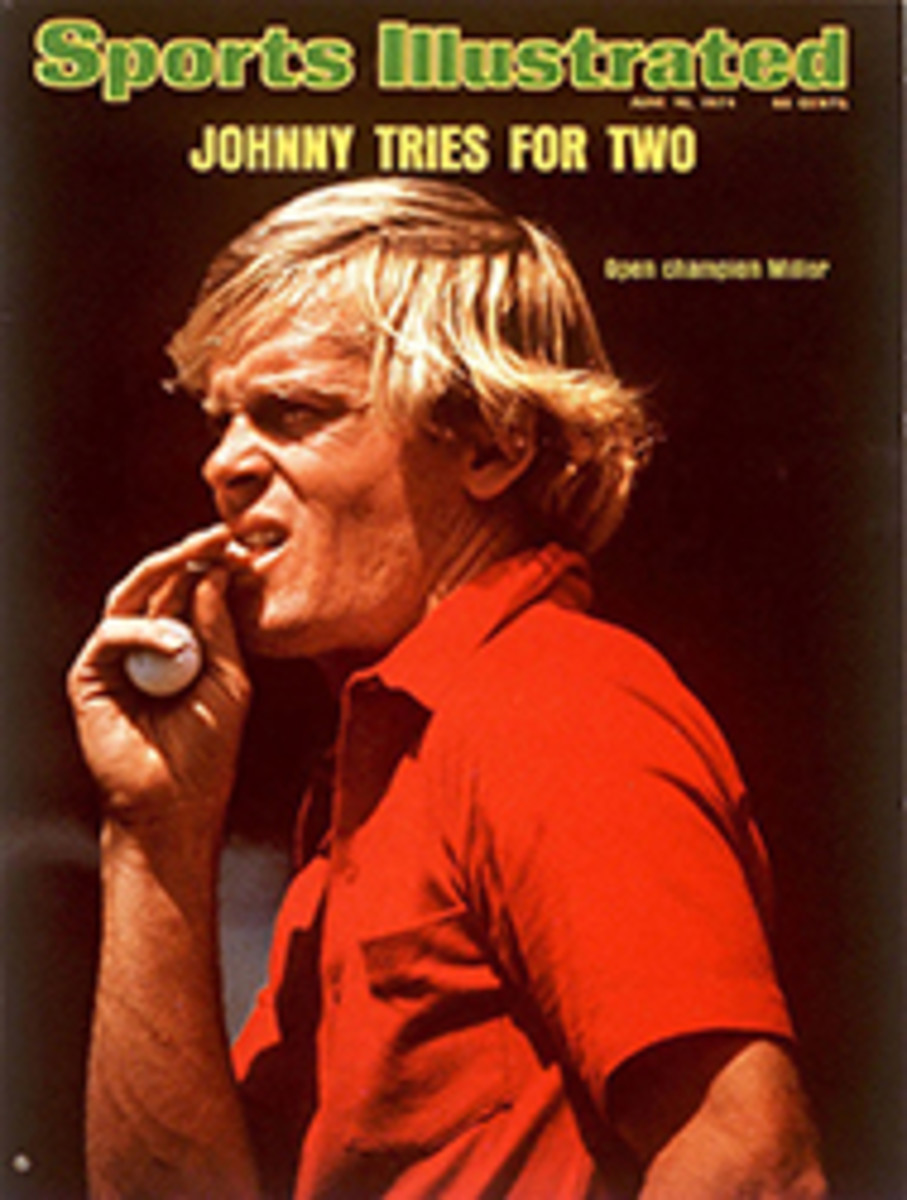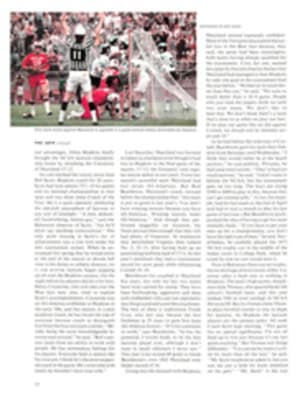
No way to beat the Blues
Italy, the host country and defending titlist at the 20th World Bridge Team Championship, allowed its challengers a glimpse of the Bermuda Bowl, but it was only a brief one. At a victory banquet in Venice's posh Lido Casino following the tournament last week, the coveted trophy was once again claimed by the Italians. Giorgio Belladonna, Benito Garozzo and Pietro Forquet, all members of Italy's famed Blue Team, had proved in the final that a hand that includes three Blues is enough to beat four Aces and a pair of Canadians, which is what North America's bridge forces had pinned their hopes on.
This is Italy's 12th Bermuda Bowl victory and 15th world title since the Blue Team began competing in 1957. France won the World Team Olympiad in 1960, and in 1970 and 1971, when no member of the Blue Team played, North America's Aces brought home the bowl. Although this year's Italian victory came by the comparatively low margin of 29 international match points, one can only wonder when—if ever—the seemingly unbeatable Blues will begin to lose their finesse. Belladonna, Garozzo and Forquet gave a scintillating performance, aided only in part by Benito Bianchi, Soldano de Falco and Arturo Franco.
Six teams entered the double round robin that began this year's tournament. For three of them the outcome of this five-day grind was virtually a foregone conclusion. Italy, North America and Brazil needed only to go through the motions to qualify for the semifinals. On the other hand, New Zealand, making its bow as the representative of the recently created Australasian zone of the World Bridge Federation, did what could be expected of a team with no previous world championship experience—it finished last. So the only question was whether Indonesia, the Far East champion, or France, representing Europe because Italy was appearing as the defender, would gain the fourth position. Indonesia succeeded only to lose heavily to Italy in the semifinals, while North America easily defeated Brazil. So, just as it has in all but three of the last 15 world championships, the battle for the bowl came down to Italy vs. North America—or in this case, Aces Bobby Wolff, Bob Ham-man, Bobby Goldman and Mark Blumenthal reinforced by Canadian stars Eric Murray and Sammy Kehela.
Going into the 96-deal final, the hopes of nonplaying captain Ira Corn were high. His team had beaten Italy in one of its two round-robin matches, giving North America a two-point advantage to carry into the final. But that very slight edge was more than erased on the first deal when the Italians won six IMPs. For a while the match remained close, but then Italy began forging the "comfortable" 48-IMP lead it held before the last 32-deal session. That was when Wolff-Hamman, winners of the 1974 World Open Pair Championship, and Murray-Kehela caught fire. The three Blues plus Bianchi, who had been playing throughout the final—de Falco and Franco sat it out—failed to score a single IMP on the next 10 boards as the North Americans staged a 43-point blitz, cutting the Italians' lead to a precarious five. Onlookers wondered if the time had come when Italy could no longer win with only three of its stars.
But the gates were slammed shut as the Blues once again displayed the superior slam bidding that has distinguished their performances for lo, these many years. In the end, their final margin of 29 points was a clear, if not so overwhelming, mark of victory.
The standard of play on both sides was high. However, the brilliant exploits of the world champions have been set forth so often before that it may not be amiss to chronicle a hand that was amusing—at least to the large majority of Italians watching the play via Vu-Graph. When the following deal appeared on the screen, Italian rooters were gloomily aware that Forquet and Bianchi had taken a phantom sacrifice, going down 800 points at five clubs doubled against Murray-Kehela's four-spade contract, which could not have been made. This minus score appeared to augur a handsome swing for the North Americans, even if Wolff, one of the world's leading players, went down a trick at three no trump. But things happened.
With only four top tricks in the major suits, Wolff needed five club tricks to bring home his contract. East had opened the bidding; West had made a weak bid based on a long suit. So Wolff elected to finesse the 10 of clubs after winning the first spade. This lost to the jack and a spade continuation knocked out declarer's last stopper. Dummy was entered with the ace of hearts and the club finesse was repeated. It was a play that was called for by the bidding, but it was not exactly a success. Belladonna, with his virtual bust, wound up collecting seven tricks against three no trump. East's top diamonds took three more and the 800-point loss was reduced to a net deficit of only 200 as South went down six!
Later on, the usually conservative Forquet, playing East on the deal shown on the next page, let the opponents escape from a trap and lost 790 points instead of collecting a quiet 200 against four hearts not doubled as the North American East-West pair had done in the closed room. Sammy Kehela, East at the other table, had observed the axiom: "Never disturb the contract when you have the opponents where you want them." Perhaps Forquet judged that the opponents would also be in trouble at four spades. He might even have beaten that contract had he been on lead and able to give Bianchi two heart ruffs. As it was, Goldman, holding three-card support for his partner's known five-card suit and with prospects of shedding heart losers on his diamonds, retreated to victory.
After winning the ace of diamonds, West continued the suit. Dummy won and a spade was led. Forquet hopped in with the ace and led a heart. A high heart by Blumenthal would have been fatal, but the double of hearts was also the tip-off in spades. He played low and West ruffed. West's diamond return killed one discard when East ruffed and South over-ruffed. But one discard was all declarer needed and, after trumps had been drawn, dummy's remaining diamond enabled South to chalk up his doubled contract for a gain of 14 IMPs. It was not enough.
It can be said that the American contingent salvaged some pride, however. A hastily assembled American women's squad upset Italy's European and World Olympiad women's team champions by 35 IMPs in an exhibition match. Dorothy Hayden Truscott, Emma Jean Hawes, Carol Sanders, Betty Ann Kennedy, Marietta Passell and Bette Cohn took the Venice Trophy, which may some day become the women's equivalent of the Bermuda Bowl.
Both sides vulnerable East dealer
NORTH
[Ace of Spades]
[Ace of Hearts]
[8 of Hearts]
[6 of Hearts]
[5 of Hearts]
[4 of Hearts]
[9 of Diamonds]
[3 of Diamonds]
[2 of Diamonds]
[10 of Clubs]
[6 of Clubs]
[5 of Clubs]
[3 of Clubs]
WEST
[Jack of Spades]
[10 of Spades]
[9 of Spades]
[8 of Spades]
[7 of Spades]
[6 of Spades]
[2 of Spades]
[10 of Hearts]
[7 of Hearts]
[3 of Hearts]
[10 of Diamonds]
[King of Clubs]
[Jack of Clubs]
SOUTH
[King of Spades]
[Queen of Spades]
[King of Hearts]
[9 of Hearts]
[Jack of Diamonds]
[8 of Diamonds]
[5 of Diamonds]
[4 of Diamonds]
[Ace of Clubs]
[Queen of Clubs]
[9 of Clubs]
[4 of Clubs]
[2 of Clubs]
EAST
[5 of Spades]
[4 of Spades]
[3 of Spades]
[Queen of Hearts]
[Jack of Hearts]
[2 of Hearts]
[Ace of Diamonds]
[King of Diamonds]
[Queen of Diamonds]
[7 of Diamonds]
[6 of Diamonds]
[8 of Clubs]
[7 of Clubs]
EAST
(Garozzo)
1 [Diamond]
PASS
SOUTH
(Wolff)
1 NT
PASS
WEST
(Belladonna)
3 [Spade]
PASS
NORTH
(Hamman)
3 NT
Opening lead: jack of spades
North-South vulnerable East dealer
NORTH
[Jack of Spades]
[7 of Spades]
[6 of Spades]
[Jack of Hearts]
[8 of Hearts]
[3 of Hearts]
[2 of Hearts]
[King of Diamonds]
[Queen of Diamonds]
[Jack of Diamonds]
[2 of Diamonds]
[Ace of Clubs]
[8 of Clubs]
WEST
[10 of Spades]
[9 of Spades]
[3 of Spades]
[— of Hearts]
[Ace of Diamonds]
[10 of Diamonds]
[9 of Diamonds]
[5 of Diamonds]
[3 of Diamonds]
[Queen of Clubs]
[7 of Clubs]
[5 of Clubs]
[4 of Clubs]
[2 of Clubs]
SOUTH
[King of Spades]
[Queen of Spades]
[8 of Spades]
[5 of Spades]
[2 of Spades]
[Ace of Hearts]
[King of Hearts]
[6 of Hearts]
[4 of Hearts]
[7 of Diamonds]
[4 of Diamonds]
[King of Clubs]
[9 of Clubs]
EAST
[Ace of Spades]
[4 of Spades]
[Queen of Hearts]
[10 of Hearts]
[9 of Hearts]
[7 of Hearts]
[5 of Hearts]
[8 of Diamonds]
[6 of Diamonds]
[Jack of Clubs]
[10 of Clubs]
[6 of Clubs]
[3 of Clubs]
EAST
(Forquet)
PASS
PASS
DBL.
DBL.
SOUTH
(Blumenthal)
1 [Spade]
2 [Heart]
PASS
PASS
WEST
(Bianchi)
PASS
PASS
PASS
PASS
NORTH
(Goldman)
1 NT
4 [Heart]
4 [Spade]
PASS
Opening lead: ace of diamonds

